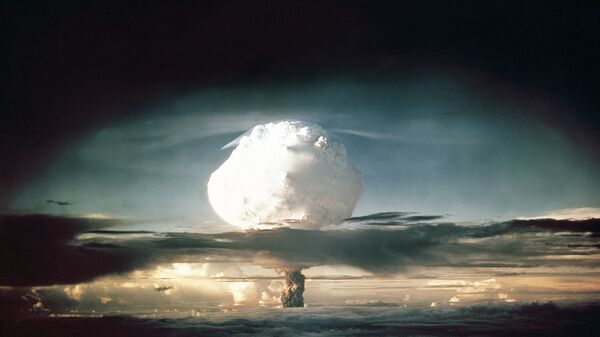Between 1946 and 1958, the US tested 67 nuclear weapons in the Marshall Islands, a chain of volcanic islands and atolls in the central Pacific Ocean between Hawaii and the Philippines.
According to the study, the Bikini and Enewetak Atolls were used as ground zero for the tests, which resulted in “unprecedented environmental contamination” and adverse health effects for the indigenous people living on the islands. In addition, people who lived on Rongelap and Utirik Atolls also experienced negative health effects due to radioactive fallout from the Bravo nuclear test conducted by the US on March 1, 1954.
In the study, researchers tested soil samples for external gamma radiation levels from nine islands: Enjebi, Ikuren and Japtan in Enewetak Atoll; Bikini and Enyu in Bikini Atoll; Naen in Rongelap Atoll; and Aon, Elluk and Utirik in Utirik Atoll. Gamma radiation is electromagnetic radiation released from the radioactive decay of atomic nuclei.
The study also tested for the activity concentrations of radioactive chemical elements including americium-241, cesium-137, plutonium-238 and plutonium-239,240 in the soil of 11 islands (Enewetak, Japtan, Medren and Runit in Enewetak Atoll; Bikini and Enyu in Bikini Atoll; Naen and Rongelap in Rongelap Atoll; Aon, Elluk and Utirik in Utirik Atoll; and Majuro Island, Majuro Atoll in the southern Marshall Islands).
The findings, published Monday in the journal PNAS, reveal that there were elevated gamma radiation levels on Enjebi Island, and one of two soil samples collected from the island had high concentrations of radioactive chemical elements, with the levels of cesium-137 and plutonium-238 being higher than safety limits. Runit Island also had “significant levels” of radioactive chemical element concentrations.
“Our results suggest that people currently living in southern Enewetak are not likely to get significant exposure to radiation from nuclear weapons testing. However, the presence of radioactive isotopes on the Runit Island is a real concern, and residents should be warned against any use of the island,” the study notes.
The study also found “highly elevated gamma radiation levels” and “elevated concentrations” of americium-241, cesium-137 and plutonium-239,240 on Bikini Island.
“In particular, 241Am [americium-241] soil activity concentrations in Bikini were up to 3 times higher than in soil samples from PSRER [Polesie State Radioecological Reserve] in Belarus and up to 150 times higher than in soil samples from the Rocky Flats Environmental Technology Site in Colorado. 239,240Pu [plutonium-239,240] concentrations were up to 15-1,000 times higher than in samples from areas affected by the Chernobyl and Fukushima disasters,” the study writes.
Similarly, gamma radiation levels on Naen Island were also much higher than the maximum exposure limit of 100 millirems per year as stipulated by the US-Republic of the Marshall Islands Agreement.

